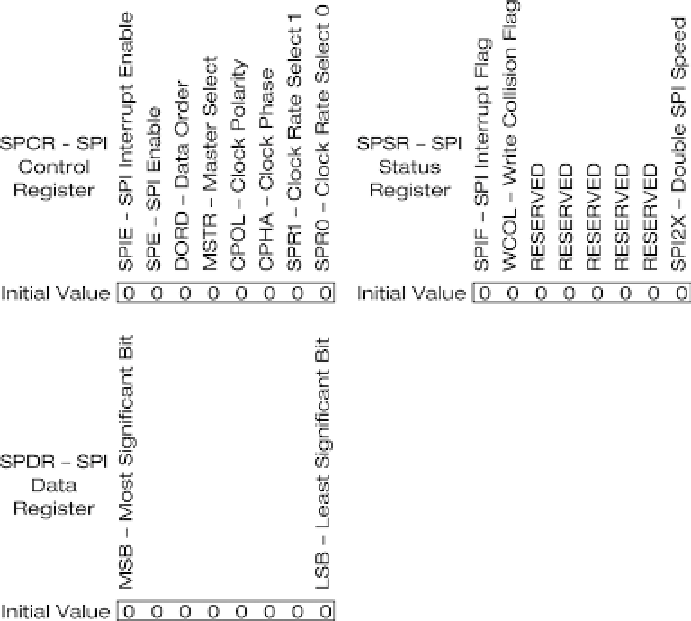Hardware Reference
In-Depth Information
are met, the device will jump to ISR(SPI_STC_vect). ISR(SPI_STC_vect) is similar to a function, but has some key
differences. The compiler does not see this as a normal function, so code may be optimized on compile. To protect
against this, data types may have the property
_volatile
added when in doubt. The biggest difference is that nothing
may be passed to an ISR upon calling it and no data will be returned. ISR cannot call as a normal function; only the
internal interrupt handler may call it when conditions are met. Global variables can be used within the ISR and will be
usable upon exit. Otherwise, using memory space and pointers is also an option, though greater in complexity.
SPI by the Registers
There is no library functionality for an Arduino to run as a slave device at the time of writing. You can create a slave
by directly addressing the registers that control SPI. This method will be used in Listing 10-2 to create a slave device
and will be used in subsequent examples. The functionality of SPI is controlled within three 8-bit registers. This does
not include manipulating the data direction registers or the SREG for global interrupts, which will also be required
for a proper SPI device to be written in a register. The three SPI registers are the SPCR (SPI control register), SPSR (SPI
status register), and SPDR (SPI data register). The layouts of these three registers are shown in the Figure
10-1
.
Figure 10-1.
SPI register structure
The SPIE (SPI interrupt enable) in the SPCR enables the SPI interrupt vector when SREG is also enabled. This
allows the device to respond quickly when data is ready to transmit and is an absolute must for a slave device. SPI is a
highly time-sensitive protocol; the master will transmit data when it is ready and assumes that the slave is waiting. The
slave cannot delay the master and will cause problems when not properly synchronized with the master. It is possible
for the slave to begin listening to the transmission partway through, which will result in lost data. In addition to using
interrupts, the master may also include a short delay before the first byte in a string of bytes is transmitted, which
helps ensure that the slave is ready and waiting.

